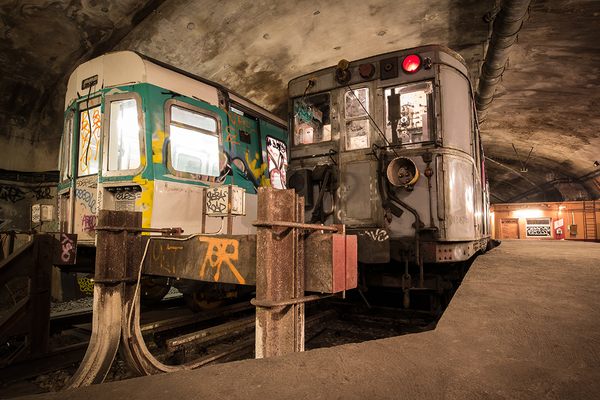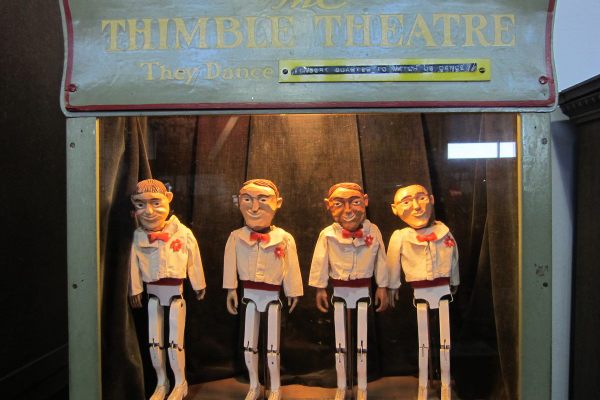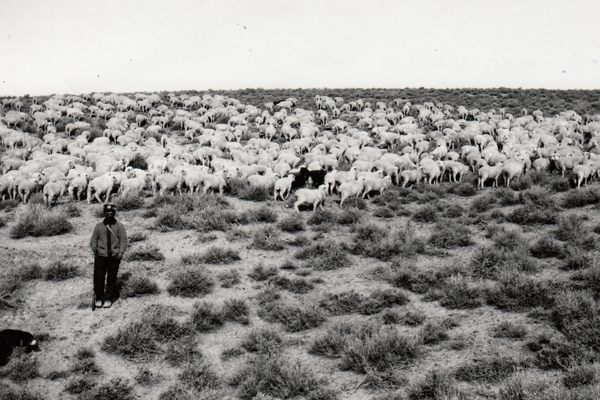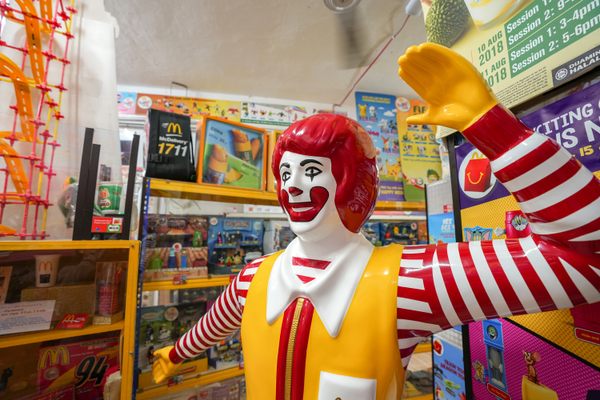More Than Lincoln: Illinois’ Best Overlooked and Obscure Museums
Illinois Week on Atlas Obscura was created in partnership with Enjoy Illinois as part of the launch of the new Illinois Obscura Society. Sign up to find out more about the back room tours, unusual adventures, and incredible parties that Atlas Obscura will be putting on in Chicago and greater Illinois.
Illinois, land of Lincoln that it is, has plenty of museums devoted to our favorite top-hatted president. However, the state has a lot more to offer, so let’s explore some of the more unusually oriented museums you might otherwise overlook in a road trip across the Prairie State.
Collection of the Museum of Funeral Customs (now at the Kibbe Hancock Heritage Museum)
Carthage, Illinois
 Funeral carriage (Photo by Rklawton/Wikimedia)
Funeral carriage (Photo by Rklawton/Wikimedia)
Once located near Oak Ridge Cemetery where Abraham Lincoln was buried, the Museum of Funeral Customs features paraphernalia used in American funerary and mourning customs. Visitors can enjoy a re-created embalming chamber from the 1920s, coffins, post-mortem photography, and many more deathly exhibits. A highlight of this museum was the funeral train that carried Abraham Lincoln’s coffin to its interment.
Although the museum shut its doors in early 2009 due to low attendance, the collection of funerary items was given to the Kibbe Hancock Heritage Museum in Carthage, Illinois in 2011.
 Embalming fluid from America’s part (Photo by Rklawton/Wikimedia)
Embalming fluid from America’s part (Photo by Rklawton/Wikimedia)
Super Museum
Metropolis, Illinois
 Super Museum in Metropolis, Illinois (Photo by Alan Berning/Flickr)
Super Museum in Metropolis, Illinois (Photo by Alan Berning/Flickr)
Did you know that Superman is sort of from Illinois? The Man of Steel’s official hometown is indeed Metropolis, simply the Metropolis in Illinois. This heroic heritage is celebrated in the city’s Super Museum which features more than 20,000 items from the collection of life-long Superman enthusiast, Jim Hambrick. The superhero’s eight decades of history are preserved in exhibits that present virtually every toy ever produced, movie props, posters, costumes, and much more. Apparently quite a few people thought the museum was pretty spectacular as the Super Museum has in the past received the title of “#1 Small Town Attraction in America.”
 Inside of Super Museum (Photo by Madolan Greene/Flickr)
Inside of Super Museum (Photo by Madolan Greene/Flickr)
American Toby Jug Museum
Evanston, Illinois
 One of many display cabinets of toby jugs (Photo by Illinois Office of Tourism)
One of many display cabinets of toby jugs (Photo by Illinois Office of Tourism)
In case you were unaware, a toby jug is a ceramic pitcher modeled after a person or animal, fictional or historical. Now that we’re all on the same page, you’ll be pleased to learn that the American Toby Jug Museum has over 8000 of these “tobies.” The oldest date back to 1960 and the newest ones are still coming off production lines.
Founded by Stephen Mullins who started collecting these jugs more than 65 years ago when he was just 13, the collection used to live in his house until it simply became too numerous. The museum now commissions jug pieces directly from artists, with the latest one depicting John F. Kennedy.
American Fluorite Museum
Rosiclare, Illinois
 Fluorite display (Photo by Conrad Bakker/Flickr)
Fluorite display (Photo by Conrad Bakker/Flickr)
Once the largest fluorspar mining company in the United States, the American Fluorite museum features photos, ore specimens, mining paraphernalia, and colorful dioramas of the lengths miners once went to in order to extract the gems from the earth. Once the largest producer in the country, Illinois’ last fluorite mines closed in 1995.
Fluroite has important industrial uses, and is well known for protecting our teeth, but many people consider the mineral beautiful on its own. It is currently the state’s official mineral, and huge chunks of the bright blue rock are on display in the museum.
Bishop Hill Historic Site
Bishop Hill, Illinois
 Colony Church (Photo by Kepper66/Wikimedia)
Colony Church (Photo by Kepper66/Wikimedia)
45 miles northwest of Peoria, a village was founded in 1846 by a scrappy group of Swedes led by Erik Jansson. As believers in the Pietist movement in Sweden, they focused on personal faith rather than doctrine or theology, putting them at odds with the Church of Sweden. Fearing persecution, Jansson and his followers immigrated to the states and tried to start a commune. The first winter killed many of the colonists but they held strong and soon the population grew to 1500. Jansson maintained direct control over Illinois’ first commune until he was murdered in 1850 by his cousin’s husband. Economic problems and infighting finally destroyed the commune in 1961.
The present-day historical site features many of the original buildings, including the Greek Revival-style Colony Church and the commune’s first permanent building, the Bjorklund Hotel.
Cahokia Mounds State Historic Site
Collinsville, Illinois
 Monk’s Mound at Cahokia Mounds (Photo by Grolltech/Wikimedia)
Monk’s Mound at Cahokia Mounds (Photo by Grolltech/Wikimedia)
A huge pre-Columbian Native American city used to exist directly across the Mississippi River from the current city of St. Louis. The historic site contains 80 human-made earthen mounds used for a variety of functions, but the ancient city used to be much grander. As the most influential settlement of the region at the time, Cahokia’s population was at its largest in the 1200s with as many as 40,000 people and was not surpassed by any city in the United States until the late 18th century.
Cahokia Mounds is currently one of only 22 UNESCO World Heritage Sites in the United States, and it is the most massive prehistoric earthen construction area in the Americas north of Mexico. Monk’s Mound is the biggest of the man-made hills, and it has four terraces stretching over ten stories in height. A community of Trappist monks briefly lived there, giving the mound its current name.
Illinois Week on Atlas Obscura was created in partnership with Enjoy Illinois as part of the launch of the new Illinois Obscura Society. Sign up to find out more about the back room tours, unusual adventures, and incredible parties that Atlas Obscura will be putting on in Chicago and greater Illinois.



































Follow us on Twitter to get the latest on the world's hidden wonders.
Like us on Facebook to get the latest on the world's hidden wonders.
Follow us on Twitter Like us on Facebook